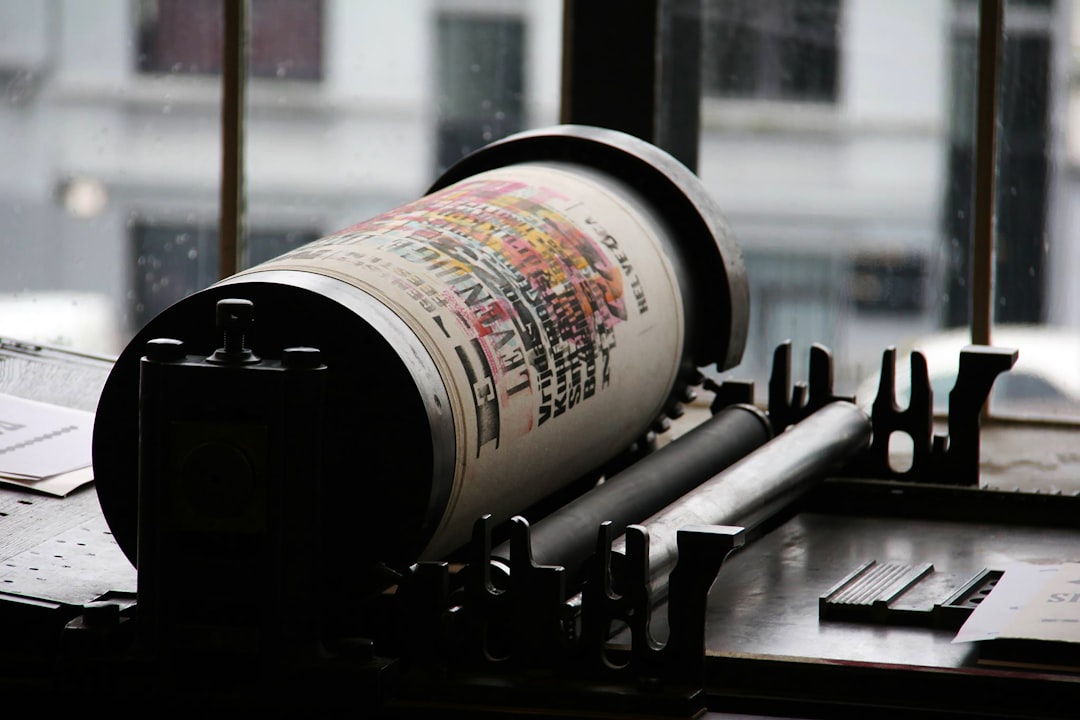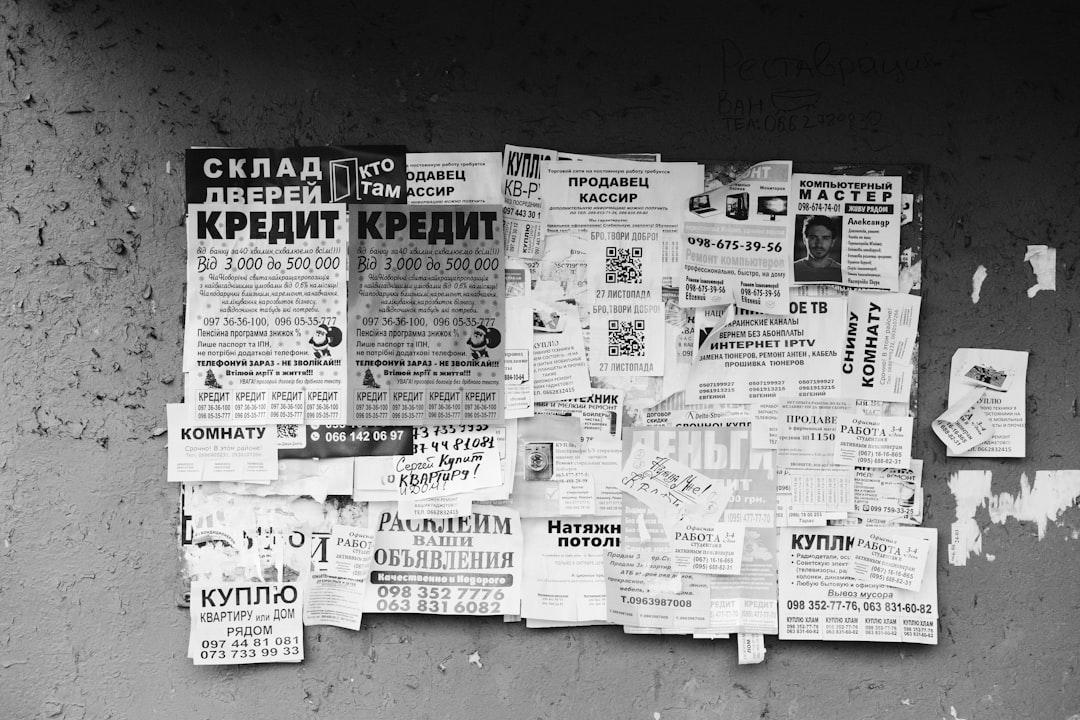

Engage prospects with a scan and streamline customer engagement with FREE QR code marketing tools by Sona – no strings attached!
Create a Free QR CodeFree consultation

No commitment

Engage prospects with a scan and streamline customer engagement with FREE QR code marketing tools by Sona – no strings attached!
Create a Free QR CodeFree consultation

No commitment
In today’s digitally driven world, QR codes have evolved from a novelty to a strategic bridge between offline engagement and online action. For newspaper publishers, they offer a practical path to convert attention on the page into measurable digital outcomes: subscriptions, registrations, advertiser conversions, and community participation. Readers do not need an app, and scans can happen in seconds, which reduces friction at the moment of interest.
As print media adapts, publishers face pressure to monetize attention, target high-intent audiences, and prove ROI to advertisers while protecting editorial standards and reader trust. QR codes give print a responsive layer that is both easy for readers and valuable for publishers. A single scan can connect to exclusive multimedia, trigger a personalized offer, or launch a feedback loop that informs future coverage.
This article lays out a comprehensive playbook for using QR codes to drive conversions, unlock analytics, and integrate print with your digital stack. You will learn where to place codes, which formats to use, how to segment and retarget audiences, and how to attribute revenue so every scan supports strategic growth for both editorial and advertising teams.

Newspaper readers act on impulse. They pause over a scoop, a city council story, a coupon, or a sports feature, then move on. Without a simple bridge from paper to digital, many of those high-intent moments are lost. QR codes close that gap by making it effortless to take the next step: subscribe, register, claim an offer, or watch a video clip. Publishers who design QR journeys deliberately can convert casual readers into identifiable digital audiences and paying customers.
Traditional workflows like mail-in subscription cards, phone-based contest entries, and manual coupon clipping create friction and are nearly impossible to track at the level advertisers now expect. QR codes streamline these analog processes, reduce abandonment, and attach measurable signals to every print asset. You can see which pages inspire action, when readers respond, and what offers resonate. Platforms like Sona QR centralize code creation, routing, and analytics so your team can iterate quickly and prove impact.
Some publishers deploy dynamic QR codes through platforms like Sona QR to automate code generation, map scans to the correct campaign, and sync events into HubSpot or Salesforce. Dynamic routing lets you improve destinations after print deadlines, test offers by geography, and protect against dead links while preserving a reliable audit trail for advertisers. Start creating QR codes for free.

Print retains unique strengths: widespread reach, local authority, and trusted editorial voices. Yet even the most loyal readers remain largely anonymous to the newsroom and the ad team, which limits the ability to tailor content, upsell subscriptions, or prove advertiser performance. QR codes make that connection immediately, as shown by Bangor Daily News, turning passive reading into active participation and measurable outcomes.
For readers, QR codes provide speed and simplicity. Scans work instantly with a phone camera, no app required. For publishers, dynamic codes give flexibility to update destinations post-print and unlock real-time analytics. Together, these qualities modernize print without altering its core experience: crisp storytelling and relevant ads.
By capturing reader actions and tying them to content, offers, and context, publishers gain visibility into audience behavior. This enables smarter subscriber acquisition, sharper advertiser targeting, and a stronger case for premium sponsorships tied to measurable outcomes.

Not all QR codes serve the same purpose. Different formats align with common publisher goals, from lead capture to app growth to event attendance. Selecting the right QR type for each placement ensures a frictionless experience and better conversion.
For newspapers, formats that streamline subscriptions, feedback, and advertiser engagement tend to deliver the most value. Consider how your readers will interact in the moment: a morning commuter scanning on a train, a weekend browser at the breakfast table, or a local business owner reading the classifieds. Match the format to the context so action feels effortless.
With Sona QR, you can generate and manage all of these formats in one place, swap destinations when needed, and unify analytics across campaigns for a complete view of performance.

Growth comes from meeting readers where attention and intent intersect. In newspapers, those moments are predictable, as outlined in newspapers and QR codes: bold headlines, eye-catching photos, weekend features, and time-bound offers. QR codes transform these high-attention moments into measurable actions that feed both subscriber pipelines and advertiser results.
Publishers should also extend beyond the page. Out-of-home promotions, direct mail, and inserts can all carry QR codes that accelerate the reader journey. Tie each placement to a specific offer or content experience, then compare results across channels and audiences to spot high-yield opportunities.
Connecting QR performance to your CRM and analytics stack lets you prioritize segments and placements that consistently convert. Over time, this creates a feedback loop that improves creative, offer strategy, and inventory pricing for advertisers.
Successful QR deployments align with your core reader behaviors and business objectives. The best programs give readers something immediately valuable and give you a measurable outcome that advances subscriptions, engagement, or advertiser ROI.
Below are high-impact use cases that fit common publisher workflows and set the stage for reliable attribution and continuous optimization.
Some publishers drive higher conversion by issuing unique QR codes to at-risk cohorts like lapsed subscribers in local zones, then triggering targeted offers when those codes are scanned. This blends retention and acquisition strategies through on-page signals.
Every scan is a signal: what the reader saw, where they were, when they engaged, and what they wanted. With QR codes placed across sections and campaigns, you can segment audiences based on real behavior and intent data rather than assumptions. This turns anonymous print attention into structured, high-value lists for retargeting, nurturing, and sales handoff.
The key is to tag and sync scan data automatically. When your QR platform feeds events to your CRM and ad tools, you can trigger emails, SMS, and paid campaigns aligned to the exact content or offer that sparked interest. For step-by-step paid media activation, use Sona’s Playbook intent-driven retargeting.
Advanced platforms like Sona QR can enrich scan data with identity resolution and predictive scoring through Sona, an AI-powered marketing platform for attribution and data activation. This helps your team prioritize the next best action for each cohort and reduce wasted spend on audiences unlikely to convert.
QR codes do more than shorten a path to a webpage. They knit your offline and online channels into one connected journey. When each physical asset carries a measurable entry point, you can coordinate messaging across print, social, email, and events and then use shared analytics to optimize the whole system.
For newspaper publishers, this means aligning editorial promotions, subscriber offers, and advertiser campaigns so that scans feed a central data layer. Editorial and ad ops teams can then learn from each other’s results and refine with confidence.
QR codes serve as the offline onramp to your digital marketing engine. With a centralized platform like Sona QR, you can manage codes, monitor performance, and sync scan data with your CRM and ad platforms so every channel contributes to a unified, data-rich reader journey.
Strong execution separates promising ideas from repeatable wins. Treat QR campaigns like performance marketing: clear goals, testable creative, and continuous optimization. Publishing cycles create natural moments to test offers and iterate placements, so use your newsroom cadence to your advantage.
The following steps will help your team choose smart use cases, maximize scannability, and connect every campaign to measurable outcomes. Include editorial, design, and sales stakeholders early so you can plan cohesive reader experiences that benefit both content and advertising.
Newspapers need to connect the dots between print engagement and digital revenue. Simple scan counts are not enough. You must tie each scan to downstream actions: page views, registrations, subscription starts, coupon redemptions, and advertiser lead submissions. This full-funnel visibility is essential for optimizing spend, pricing inventory, and winning bigger sponsorships. For strategy across channels, see Sona’s blog on offline attribution.
Modern analytics close the loop by capturing scan context and integrating that data with your web analytics, CRM, and ad platforms. When your team can see which print placements drive conversions, they can justify premium positions and craft smarter packages for advertisers who demand proof.
With Sona QR and Sona.com, publishers can move beyond vanity metrics. Sona QR captures detailed scan data, while Sona.com links those interactions to known contacts and revenue outcomes through identity resolution and buyer journey analytics. The result is a verifiable path from print attention to digital conversion that supports smarter editorial and advertising decisions.
Scaling QR programs introduces new challenges. Without disciplined tagging, consistent design, and timely follow-up, performance can plateau. A few operational habits help maintain momentum and ensure that each scan contributes to a compounding data advantage.
Focus on clarity for readers and simplicity for your teams. Align code design standards across the newsroom and ad ops, and automate as much as possible so your staff can spend more time crafting offers and less time managing links.
Creative touches can lift results. For example, place a QR code next to the daily crossword with “Scan for a bonus puzzle and leaderboard” or inside a classifieds section with “Scan to list your item in minutes.” These moments of high intent convert attention into trackable actions and habit-forming experiences.

Innovation in the newspaper space often comes from practical experiments that tap into what readers already love about print. By pairing compelling content with frictionless QR experiences, publishers can unlock a steady stream of measurable engagement—see QR use in publishing for additional context.
Consider how your readers consume different sections and build QR journeys that feel like natural extensions of those experiences. The best examples create an immediate payoff that justifies the scan and sets up the next touchpoint in the relationship.
These examples demonstrate a simple rule: when QR codes deliver something immediately rewarding and the publisher captures the resulting data, both editorial and commercial teams benefit.
Even strong concepts can falter due to small execution errors. Tiny codes, vague CTAs, and cluttered placement suppress scan rates. Inconsistent tagging complicates analysis and undercuts your ability to sell results-driven ad inventory. Address these pitfalls up front to create a scalable, reliable QR program.
Equally important is trust. Be transparent about how you use scan data and follow privacy laws. Readers who understand the value exchange are more likely to engage repeatedly and progress toward subscription.
By building around these best practices, publishers strengthen reader trust, improve scan rates, and create durable foundations for data-driven growth across both subscriptions and advertising.
As print media transformation accelerates, QR codes offer a practical solution for newspaper publishers. They resolve challenges such as missed leads, anonymous traffic, attribution gaps, churn risk, and disconnected marketing by turning every page and feature into a measurable digital touchpoint. With better data and cleaner paths to action, you can convert attention into outcomes and tell a clearer story about the value of your content and your advertising.
The newspapers that win will integrate QR across editorial, circulation, and ad products, then use unified analytics to guide strategy. By embracing QR-powered interactivity and the right tools, your teams can uncover valuable audience signals, transform unknown readers into active leads and subscribers, and ensure every print effort supports measurable growth in the digital era. Platforms like Sona QR and Sona.com make this shift achievable, from code creation and dynamic routing to identity resolution and revenue attribution, so you can move confidently from scan to conversion.
QR codes have revolutionized the newspaper publishing industry by transforming traditional print into an interactive, measurable gateway for driving conversions. Whether it’s acquiring new readers, enhancing reader engagement, or delivering timely, personalized content, QR codes turn static pages into dynamic experiences that capture real-time data and deepen audience connection. Imagine knowing exactly which articles or ads prompt subscriptions or purchases—and responding instantly to maximize impact.
With Sona QR, newspaper publishers can effortlessly create dynamic, trackable QR codes that update campaigns without costly reprints and link every scan directly to revenue streams. This means you can optimize content placement, retarget interested readers, and prove ROI with confidence. Start for free with Sona QR today and turn every printed page into a powerful conversion tool that grows your subscriber base and boosts your bottom line.
Newspaper publishers can use QR codes to connect print content to exclusive multimedia, personalized offers, and interactive experiences, making it easy for readers to take immediate action such as subscribing, registering, or participating in contests.
QR codes in newspaper advertisements enable precise tracking of reader engagement, provide measurable attribution for advertisers, streamline analog processes like coupon redemption, and create interactive experiences that boost conversions and advertiser ROI.
QR codes provide a seamless, frictionless bridge from offline print pages to online content and actions by allowing readers to scan directly with their phone cameras without needing an app, enabling publishers to track engagement and convert anonymous readers into identifiable digital audiences.
Examples include Bangor Daily News using QR codes to turn passive reading into active participation and measurable outcomes, metro dailies linking investigative stories to document repositories, and community papers gathering user contributions through QR-linked forms.
Publishers can track QR code scans by time, device, location, and campaign source, then connect those scans to downstream actions like subscriptions or coupon redemptions, enabling full-funnel attribution and allowing advertisers to see clear ROI from print placements.
Use Sona QR's trackable codes to improve customer acquisition and engagement today.
Create Your FREE Trackable QR Code in SecondsJoin results-focused teams combining Sona Platform automation with advanced Google Ads strategies to scale lead generation

Connect your existing CRM

Free Account Enrichment

No setup fees
No commitment required

Free consultation

Get a custom Google Ads roadmap for your business






Launch campaigns that generate qualified leads in 30 days or less.
